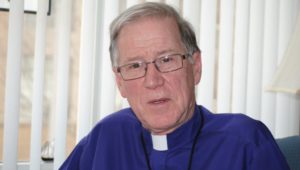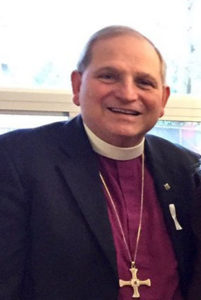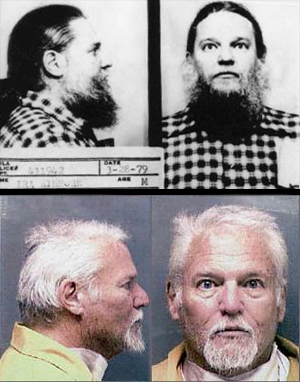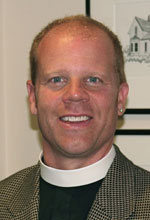Anglicans wishing to redefine marriage to encompass same-sex couples will, when they get their way, not only take God out of marriage, emptying it of significance, but drive believers out of their churches with an efficiency that would be the envy of the most rabid atheist. That’s not what is bothering the bishops, though; what is bothering them is that the few remaining conservatives in the Anglican Church of Canada will, when they leave, take their offerings with them.
From here:
 A resolution to amend the marriage canon to allow for same-sex marriages may itself be amended to include protections for Anglicans who hold to the traditional view of marriage, said Archbishop Fred Hiltz, primate of the Anglican Church of Canada.
A resolution to amend the marriage canon to allow for same-sex marriages may itself be amended to include protections for Anglicans who hold to the traditional view of marriage, said Archbishop Fred Hiltz, primate of the Anglican Church of Canada.
“There is a possibility” that the resolution, which passed its required first reading at the last General Synod in 2016, may be amended when it is presented for a required second reading in 2019, Hiltz said in an interview Thursday, April 19.
Another possibility is that a separate resolution to amend the canon could be made, one that “would enable the church as a whole, as a General Synod, to say something clearer to conservatives who want to remain in our church” in the event the resolution passes, he said.
Preparing for a potentially divisive second vote on the resolution was an important topic of conversation for the Anglican Church of Canada’s House of Bishops at their spring meeting in Niagara Falls, Ont., April 9-13, Hiltz and other members of the house said.
Larry Robertson, bishop of the diocese of Yukon, said he and some other bishops expressed concern that, if the resolution passes its second reading, those who hold to the idea of marriage as between a man and a woman may lose their status within the Anglican Church of Canada. They fear, he said, they’ll be told, “You are not in communion with the church; you are out of sync with the doctrine of our church.’ ”
Larry Robertson’s concern is rather belated. Conservative clergy in liberal dioceses have been laughed at, given the worst jobs and emotionally harassed for years. Usually this is called “inclusion”; sometimes it’s call “diversity”.
I know it’s hard to believe but, during the marriage canon vote at the last synod, the merchants of tolerance, inclusion and homoeroticism were accused of bullying anyone who had the temerity to stand in their way:
General Synod 2016 was marred by complaints of bullying during discussions of the resolution, and a statement released days after the synod by seven bishops contending that the decision endangered their “full communion within the Anglican Church of Canada.”
There are those who are still under the impression that the Anglican Church of Canada can be further “broken and divided” even though the very small piece that remains is homogenously liberal:
“I think everybody is trying to find ways that will enable our church to respect more than one view on marriage,” he said. “Many people, I think, are committed to move in that direction so that we don’t come out of General Synod as a broken and divided church in which people are saying, ‘I’ve had it, I’m gone, and I feel I have no choice but to leave.’ “
There is some good news, though: the Anglican Journal may go out of print and someone is finally questioning whether it should come clean and admit that it is nothing but the mouthpiece of a lost denomination:
Bishops also heard an update from a committee reviewing whether the Anglican Journal should continue to exist in print form and continue its traditional policy of editorial independence.
Like this:
Like Loading...
“I don’t see my role to influence anyone in that situation one way or the other,” he says. “My role, what God has called me to do, is to go and be present… so that people have someone to journey with,” he says.


 From
From 

 A resolution to amend the marriage canon to allow for same-sex marriages may itself be amended to include protections for Anglicans who hold to the traditional view of marriage, said Archbishop Fred Hiltz, primate of the Anglican Church of Canada.
A resolution to amend the marriage canon to allow for same-sex marriages may itself be amended to include protections for Anglicans who hold to the traditional view of marriage, said Archbishop Fred Hiltz, primate of the Anglican Church of Canada. As I write this, snow is on the ground covering the many crocuses and snowdrops that were just popping up last week to remind us that spring is indeed on the way. Also as I write this, almost two weeks have passed since the deadly shooting at a school in Florida in which young people and teachers lost their lives.
As I write this, snow is on the ground covering the many crocuses and snowdrops that were just popping up last week to remind us that spring is indeed on the way. Also as I write this, almost two weeks have passed since the deadly shooting at a school in Florida in which young people and teachers lost their lives. The local vicar was on hand, perhaps to deliver a sermon in hope of hastening the couple’s exit:
The local vicar was on hand, perhaps to deliver a sermon in hope of hastening the couple’s exit:
